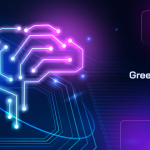
Artificial intelligence (AI)-powered PCs are quickly emerging as a new tech trend for productivity and automation. However, a recent study by Intel reveals that 86% of consumers are unfamiliar with these devices. Many of those who own them are still struggling to make them work efficiently.
While the potential for AI PCs is considerable, Intel’s survey, conducted across Germany, France, and the UK, reveals a gap. These AI-enabled computers have neural processing units (NPUs) and advanced algorithms designed to automate mundane tasks like scheduling and email management, saving users up to 240 minutes weekly on routine work.
Despite this promise, current AI PC users seem to spend more time on certain tasks than traditional PC users. This productivity gap is caused by the lack of proper education on effectively using these AI features.
Why We Need AI PCs
AI PCs can provide personalized user experiences and automate routine tasks, making workflows more efficient and responsive. Additionally, they can assure data security, as they can perform AI tasks locally without relying heavily on cloud services. This local processing reduces the risk of data breaches and enhances user privacy.
“AI on your PC can leverage the data and content in all your personal files for generative tasks without exposing it to external servers,” said Guayente Sanmartin, HP’s president of commercial systems and displays solutions.
Ranjit Atwal, Senior Director Analyst at Gartner, mentions that the market for AI PCs is evolving fast, with shipments expected to account for 43% of all PCs by 2025, up from 17% in 2024. He explains that “the debate has moved from speculating which PCs might include AI functionality to the expectation that most PCs will eventually integrate AI NPU capabilities.” However, for this integration to be beneficial, consumers need to understand the features at their disposal.
Misconceptions and Lack of Education on AI PCs
One of the key obstacles lies in user awareness and comfort with the technology. Many consumers perceive AI PCs as futuristic or gimmicky, with 44% of survey respondents stating that they think AI PCs are more suitable for creatives or technical professionals, not everyday users. This misconception has slowed the adoption rate, making it challenging for tech companies to market these devices to the general audience.
Robert Hallock, Intel’s vice president and general manager of client AI and technical marketing, points out that the real challenge for AI PC manufacturers is reeducating users to make AI technology a helpful tool rather than a burden.
“Our role as technology leaders is to support this transition to AI-assisted living and equip consumers with the knowledge they need to use an AI PC efficiently and ethically,” Hallock said.
The lack of consumer education has tangible consequences. According to the Intel study, AI PC users spend almost 15 hours a week on what Intel calls “digital chores,” and much of this time is wasted trying to learn how to communicate effectively with AI tools. Bridging the gap between the promise of AI PCs and their actual usage is critical if these devices are to fulfill their productivity potential.
As we approach the end of Windows 10 support in October 2025, the need for modern devices like AI PCs will increase. Businesses and consumers alike will have to make decisions on whether to upgrade to these AI-enabled systems. Without adequate education, however, the benefits of AI PCs may remain elusive for many users, making this technological transition more daunting than necessary.



![AI Trends for [current_date format='Y']: What's Shaping the Future of AI 4 AI trends](https://www.greenbot.com/wp-content/uploads/2025/04/AI-trends-150x150.png)
















